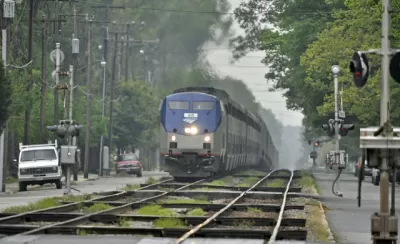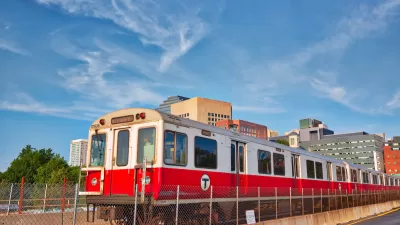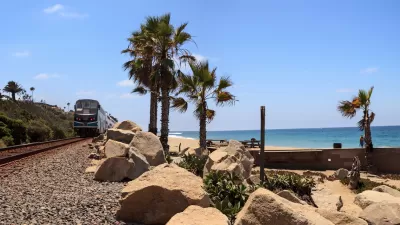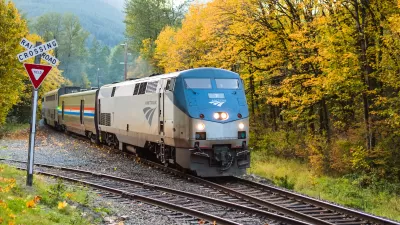While the agency is receiving less funding than advocates say is needed, it will also have a new mandate that prioritizes public service over profitability.

The current version of the "bipartisan infrastructure bill includes $66 billion in new funding for rail to address Amtrak’s maintenance backlog, along with upgrading the high-traffic Northeast Corridor from Washington to Boston" and changing the mandate of the agency, writes Madeleine Ngo. "The bill includes new language that would change Amtrak’s goal to meet the intercity passenger rail needs of the United States' rather than achieving 'a performance level sufficient to justify expending public money.' It would also add language that prioritizes service in rural areas in addition to urban ones," officially shifting the focus from profitability to public service. The new funding "comes as the agency tries to significantly expand its map nationwide by 2035 to provide more service outside of the Northeast and mid-Atlantic."
"Although John Robert Smith, a former board chairman for Amtrak, said he preferred the higher level of funding for Amtrak in the House’s version of the bill, he said he was pleased to see senators make an effort to address Amtrak’s maintenance backlog."
In addition to heavy rail, "[p]ublic buses, subways and trains are also set to receive $39 billion in new funding under the bill," but with an estimated $176 million maintenance backlog, transit advocates say it isn't nearly enough to modernize and improve the nation's transit systems.
FULL STORY: Amtrak in the infrastructure bill: $66 billion in new funding, and an adjusted mandate.

Study: Maui’s Plan to Convert Vacation Rentals to Long-Term Housing Could Cause Nearly $1 Billion Economic Loss
The plan would reduce visitor accommodation by 25,% resulting in 1,900 jobs lost.

North Texas Transit Leaders Tout Benefits of TOD for Growing Region
At a summit focused on transit-oriented development, policymakers discussed how North Texas’ expanded light rail system can serve as a tool for economic growth.

Why Should We Subsidize Public Transportation?
Many public transit agencies face financial stress due to rising costs, declining fare revenue, and declining subsidies. Transit advocates must provide a strong business case for increasing public transit funding.

How to Make US Trains Faster
Changes to boarding platforms and a switch to electric trains could improve U.S. passenger rail service without the added cost of high-speed rail.

Columbia’s Revitalized ‘Loop’ Is a Hub for Local Entrepreneurs
A focus on small businesses is helping a commercial corridor in Columbia, Missouri thrive.

Invasive Insect Threatens Minnesota’s Ash Forests
The Emerald Ash Borer is a rapidly spreading invasive pest threatening Minnesota’s ash trees, and homeowners are encouraged to plant diverse replacement species, avoid moving ash firewood, and monitor for signs of infestation.
Urban Design for Planners 1: Software Tools
This six-course series explores essential urban design concepts using open source software and equips planners with the tools they need to participate fully in the urban design process.
Planning for Universal Design
Learn the tools for implementing Universal Design in planning regulations.
Ascent Environmental
Borough of Carlisle
Institute for Housing and Urban Development Studies (IHS)
City of Grandview
Harvard GSD Executive Education
Toledo-Lucas County Plan Commissions
Salt Lake City
NYU Wagner Graduate School of Public Service





























